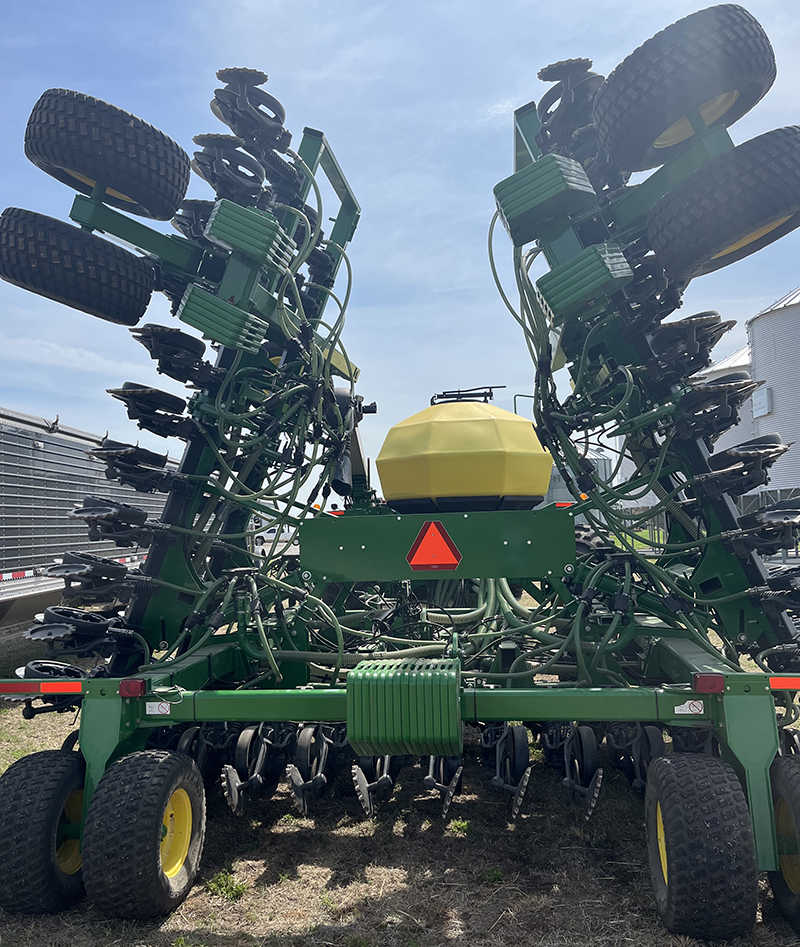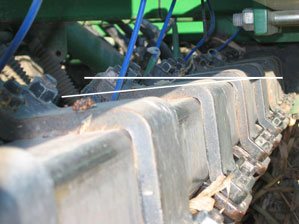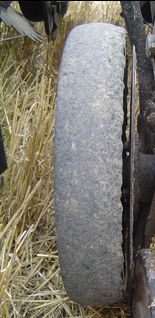If you keep missing rains but have planting to finish, I’d like to outline some common mistakes made when it’s hard and dry. Relying on the rain can leave you praying for a good stand. When fields are hard and dry, the #1 problem we continue to see on planters and drills is not enough frame weight. It takes more downforce for the openers to penetrate hard soil, and this requires enough weight on the frame for the row units to leverage against.
Excavate soil from rows behind tractor tracks or in a tough area of field to make sure seeds are getting to correct depth. Remember, to ensure you’re leveraging that down pressure most efficiently the planter toolbar needs to be running slightly nose-up. On drills, the rockshaft needs to be turned all the way under so the toolbar is sloped downward to the rear. Hydraulic downforce on drills and planters reacts quickly and really smooths out the adjustments in terrain so depth is consistent, but you still need that frame weight to leverage against.

All attachments added to the row unit or toolbar that engage the soil are robbing down pressure needed for the openers themselves. Row cleaners and closing wheel pressures that are too aggressive are often overlooked places that are taking away pressure from the opening blades. Because of their narrow design, the Thompson wheels take very little down pressure. Almost always they will close the seed slot and crumble the side wall using the lightest tension setting. The only accurate way to really know you have enough down pressure and are hitting the correct depth is to get out and dig.
We cannot stress enough that having sharp opener blades really makes a difference in penetrating dry soil. A dull edge will make downforce adjustment that much more important. Replacing opener blades by 17 5/8” on drills and 14 5/8” on planters ensures you will always have some bevel left and the blade won’t be too thin. Forges de Niaux blades last 20-30% longer to maintain that critical sharp cutting edge.
Pre-mature sidewall collapse, when dry soil falls in the furrow before the seed reaches the bottom, must be avoided. The gauge wheel lip needs to be against the blade so that loose soil is not falling in the furrow. In dry soil conditions, gauge tires with chewed up lips do a poor job of creating a firm sidewall. Gauge wheel pressure is the only thing keeping the sidewall together until the seed reaches the bottom. This is why downforce is critical: without down pressure to hold the gauge wheel firmly on the soil, you will have a hard time getting a well-defined furrow. PolyFlex tires outlast rubber tires many times over to keep that seal of the tire against the blade. Also check for worn gauge wheel arms or pivot points, as you want the gauge wheel to be touching the blade as it’s exiting the soil.
To get adequate emergence you must get the seeds down to moisture. Even if that’s deeper than you are used to planting. The above steps will help you achieve this depth. This is also when seed firming becomes critical. Letting the seed lay in the furrow, hoping you’ve done a good job packing the soil over the seed with the closing wheel, is a losing battle in structured no-till fields. Pushing that seed into moisture, so it is surrounded on all sides with moist soil, is the extra step needed to really improve emergence. Here again, it takes more pressure to do this in no-till soils, so double-check the seeds are firmly pushed into the soil so it is hard to dislodge the seed with your fingers. This will further help with closing, so you can be aggressive with the spoke closing wheels and not worry about dislodging seeds. DuraLok firming wheels are the narrowest on the market. They fit the trench to embed the seed in the bottom of the trench, not just part way there.
Exapta carries solutions for all the problems outlined above. We want to help solve your seeding problems and improve emergence! Give us a call to discuss what you’re seeing in the field: 785-820-8000. Our knowledgeable staff will point you in the right direction, regardless of whether it’s our product or not.


